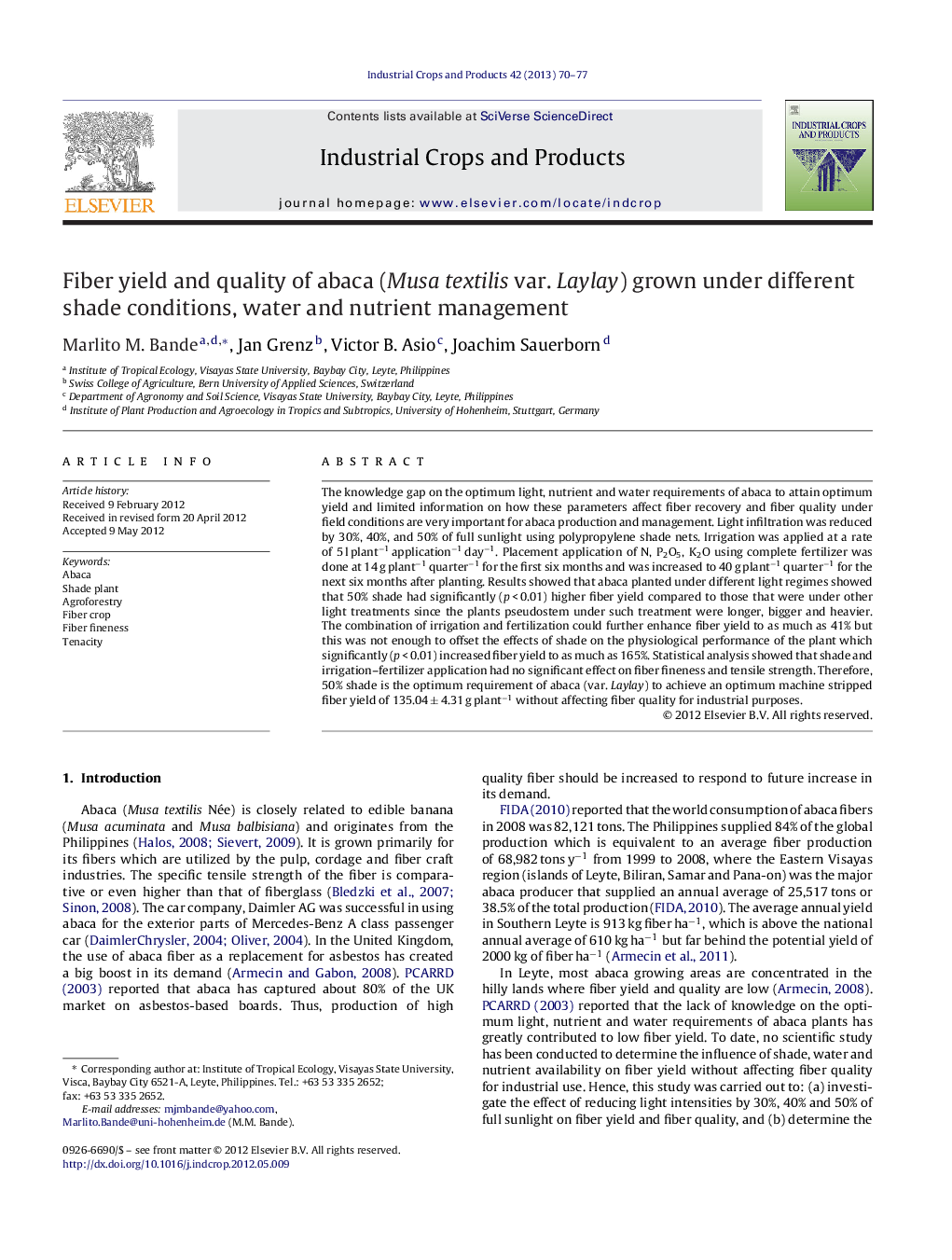| Article ID | Journal | Published Year | Pages | File Type |
|---|---|---|---|---|
| 4513717 | Industrial Crops and Products | 2013 | 8 Pages |
The knowledge gap on the optimum light, nutrient and water requirements of abaca to attain optimum yield and limited information on how these parameters affect fiber recovery and fiber quality under field conditions are very important for abaca production and management. Light infiltration was reduced by 30%, 40%, and 50% of full sunlight using polypropylene shade nets. Irrigation was applied at a rate of 5 l plant−1 application−1 day−1. Placement application of N, P2O5, K2O using complete fertilizer was done at 14 g plant−1 quarter−1 for the first six months and was increased to 40 g plant−1 quarter−1 for the next six months after planting. Results showed that abaca planted under different light regimes showed that 50% shade had significantly (p < 0.01) higher fiber yield compared to those that were under other light treatments since the plants pseudostem under such treatment were longer, bigger and heavier. The combination of irrigation and fertilization could further enhance fiber yield to as much as 41% but this was not enough to offset the effects of shade on the physiological performance of the plant which significantly (p < 0.01) increased fiber yield to as much as 165%. Statistical analysis showed that shade and irrigation–fertilizer application had no significant effect on fiber fineness and tensile strength. Therefore, 50% shade is the optimum requirement of abaca (var. Laylay) to achieve an optimum machine stripped fiber yield of 135.04 ± 4.31 g plant−1 without affecting fiber quality for industrial purposes.
► Shade significantly (p < 0.01) improved fiber yield to 165%.► Irrigation and fertilization increased (p < 0.05) fiber yield to 41%.► 50% shade is the optimum light needed by abaca to attain optimum fiber yield.► Fineness and tenacity were affected at different fiber strands position.► Inner fibers had larger and weaker fiber strand than outer fibers.
